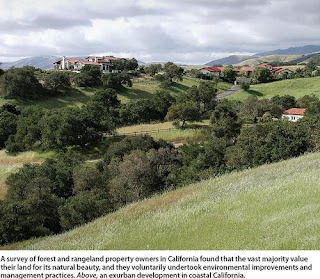Graze the Aisles of Whole Foods Market to Benefit the California Rangeland
Trust!
On Wednesday, Sept. 25th, Whole Foods Market will donate 5% of net sales from Northern California and Reno stores to Rangeland Coalition signatory, the California Rangeland Trust. Please help spread the word by passing this on to your family, friends and neighbors. By simply shopping for groceries, you'll help protect ranchlands for all Californians. To learn more about the California Rangeland Trust click here.
On Wednesday, Sept. 25th, Whole Foods Market will donate 5% of net sales from Northern California and Reno stores to Rangeland Coalition signatory, the California Rangeland Trust. Please help spread the word by passing this on to your family, friends and neighbors. By simply shopping for groceries, you'll help protect ranchlands for all Californians. To learn more about the California Rangeland Trust click here.
So, all you want is some bread and bologna and the kids need a nap or you're late for pilates, why does stopping by Whole Foods Market on Sept. 25 matter? And, aren't all those cows killing the landscape?
Here are answers from the experts to some FAQs:
General Facts…- 34.1 million acres or 34 percent of California is actually grazed and most of this is on private lands. (California Department of Forestry and Fire Protection. 2010. California’s Forests and Rangelands: 2010 Assessment)
- Almost all of our surface water, including most of the state’s drinking water, crosses the state’s millions of acres of rangeland. (University of California)
- Rangelands provide flood protection and ground water recharge. Research shows about 6 to 10 inches of precipitation are required to initiate stream flow on a watershed. Once the water-holding capacity of the soil fills, additional precipitation creates stream flow. (Dalghren et al, 2001)
- U.S. grazing lands, including managed pasturelands, have the potential to remove an additional 198 million tons of carbon dioxide (CO2) from the atmosphere per year for 30 years (Follett et al. 2001). This would offset 3.3 percent of all U.S. CO2 emissions from fossil fuels (EIA 2008) and help protect grazing land soil quality for the future.
- Heavy grazing favors California ground squirrels, a primary prey for golden eagles. (UC, ANR Publication 21626, 2006)
- Recreation can be enhanced by cattle grazing because wildflowers bloom in less dense vegetation. (e.g. East Bay Regional Park District).
- Grazing is an important disturbance in vernal pool grasslands. Grazed vernal pools have higher native plant diversity, and hold water longer than ungrazed pools. This favors species with long aquatic life cycles like the California tiger salamander and plants such as goldfields and Downingia. (Marty 2005)
- Grazing perennial grasslands helps control the spread of some invasive weed species. (Stromberg et al. 2007).
- Livestock grazing can decrease levels of nitrate pollution in wetland waters. (Allen-Diaz et al. 2004)
- Cattle grazing can be an important and effective approach to manage coastal grasslands. (Cushman 2009)
- Prescribed grazing, using cattle and/or sheep, is a tool to manage vegetation to meet wildlife habitat objectives. (USFWS Bitter Creek NWR Draft Prescribed Grazing Plan 2012)
Butterflies
- It has been demonstrated that managed grazing can improve habitat for threatened and endangered species such as the Bay Checkerspot Butterfly, considered an umbrella species for grassland ecosystems (Murphy and Weiss, 1988).
- Managed grazing can increase the density of native plants that support San Bruno Elfin Butterfly and Mission Blue Butterfly populations. (USFWS 2010)
- Cattle grazing can benefit Smith’s Blue Butterfly. (Cushman, 2009)
Information compiled and used courtesy of the California Rangeland Conservation Coalition.



No comments:
Post a Comment